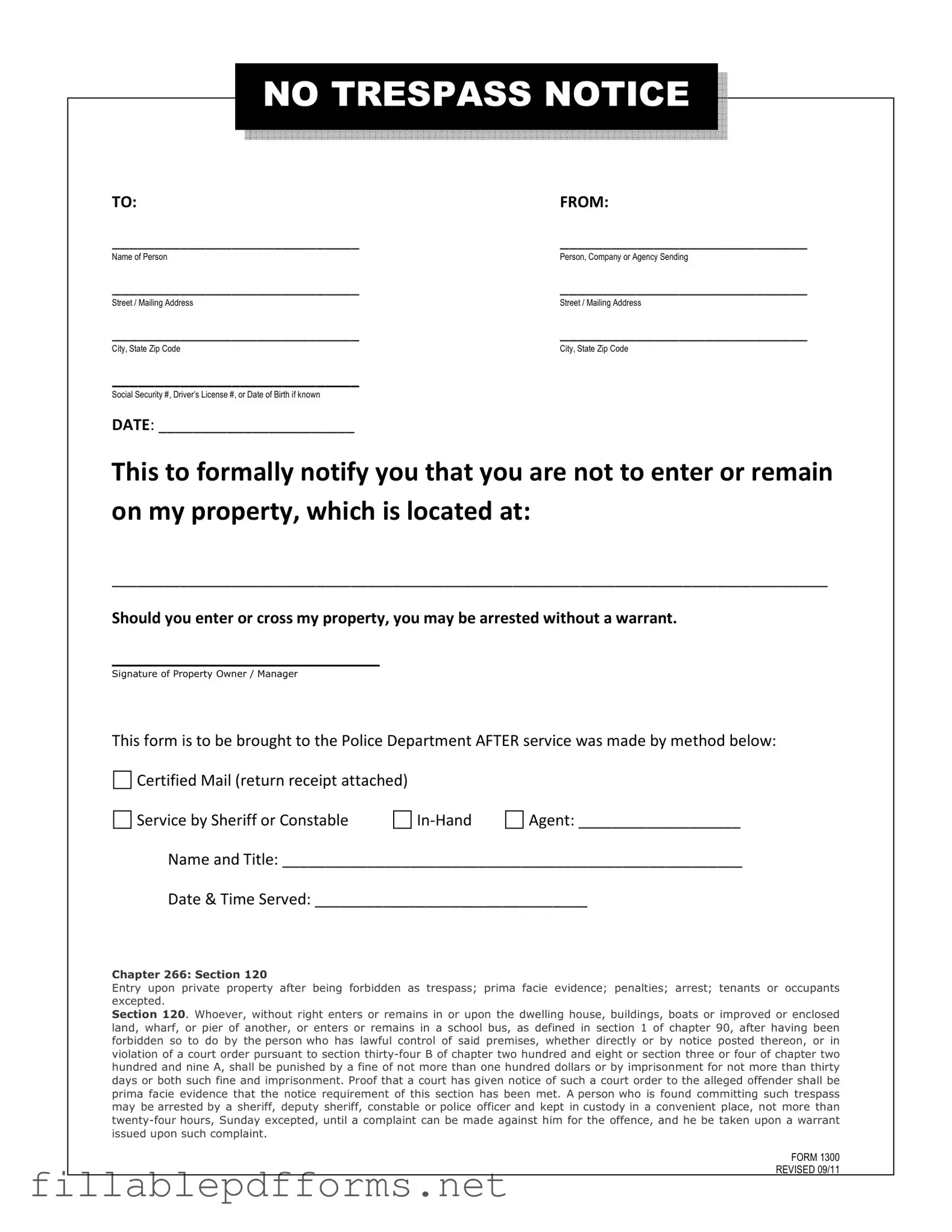A No Trespassing Letter serves as an important tool for property owners who wish to assert their rights and maintain control over their land. This letter formally communicates to individuals that they are not permitted to enter or remain on the specified property, which can help prevent unwanted intrusions. The form includes essential details such as the names of both the sender and the recipient, the address of the property in question, and the date of the notice. Additionally, it outlines the consequences of trespassing, emphasizing that individuals may face arrest without a warrant if they ignore the warning. To ensure the letter is legally effective, it must be served properly, with options including certified mail, sheriff or constable service, or in-hand delivery. The form also allows for the inclusion of the agent's name and title, along with the date and time the notice was served. By utilizing a No Trespassing Letter, property owners can take proactive steps to protect their rights and ensure their property remains secure.
